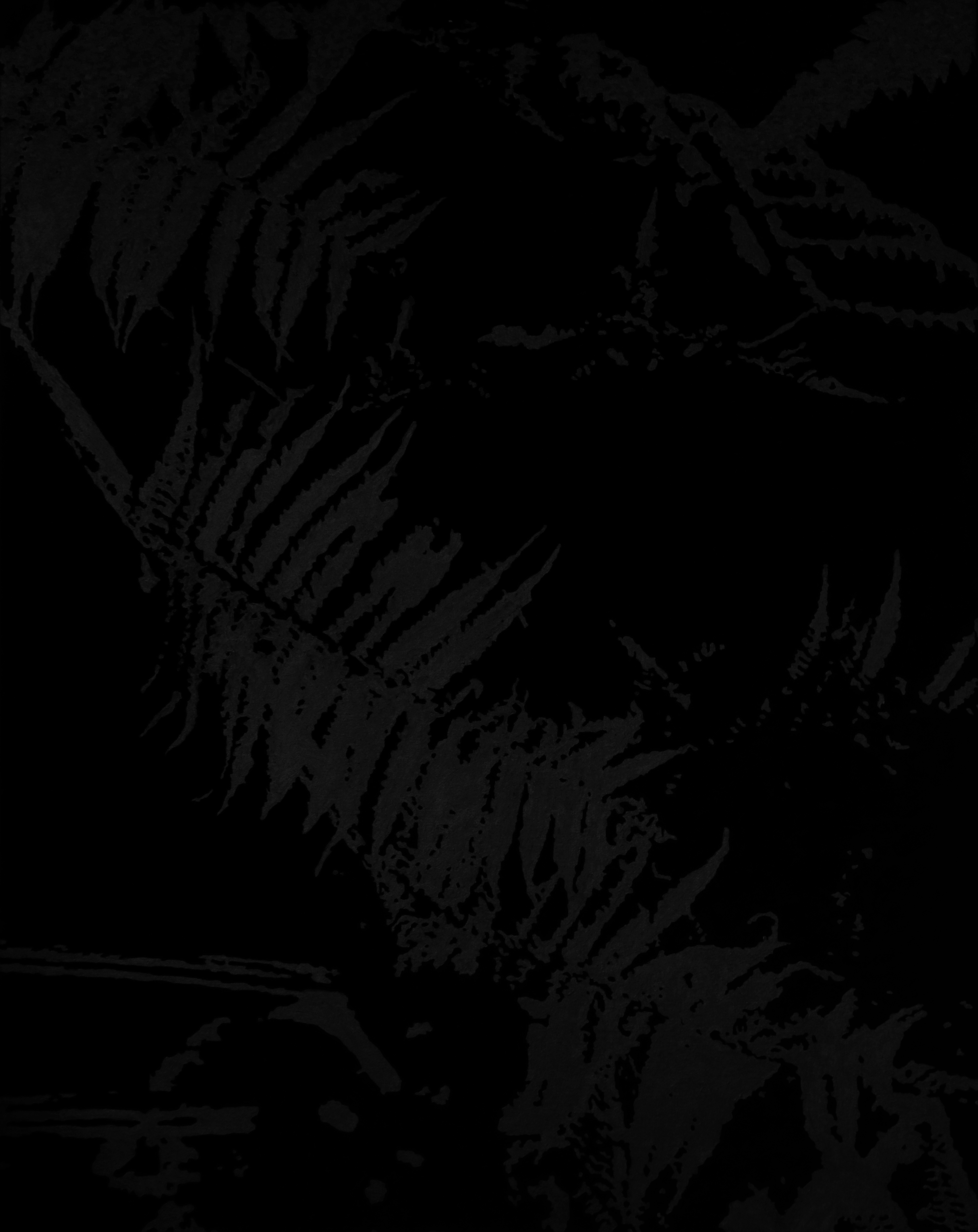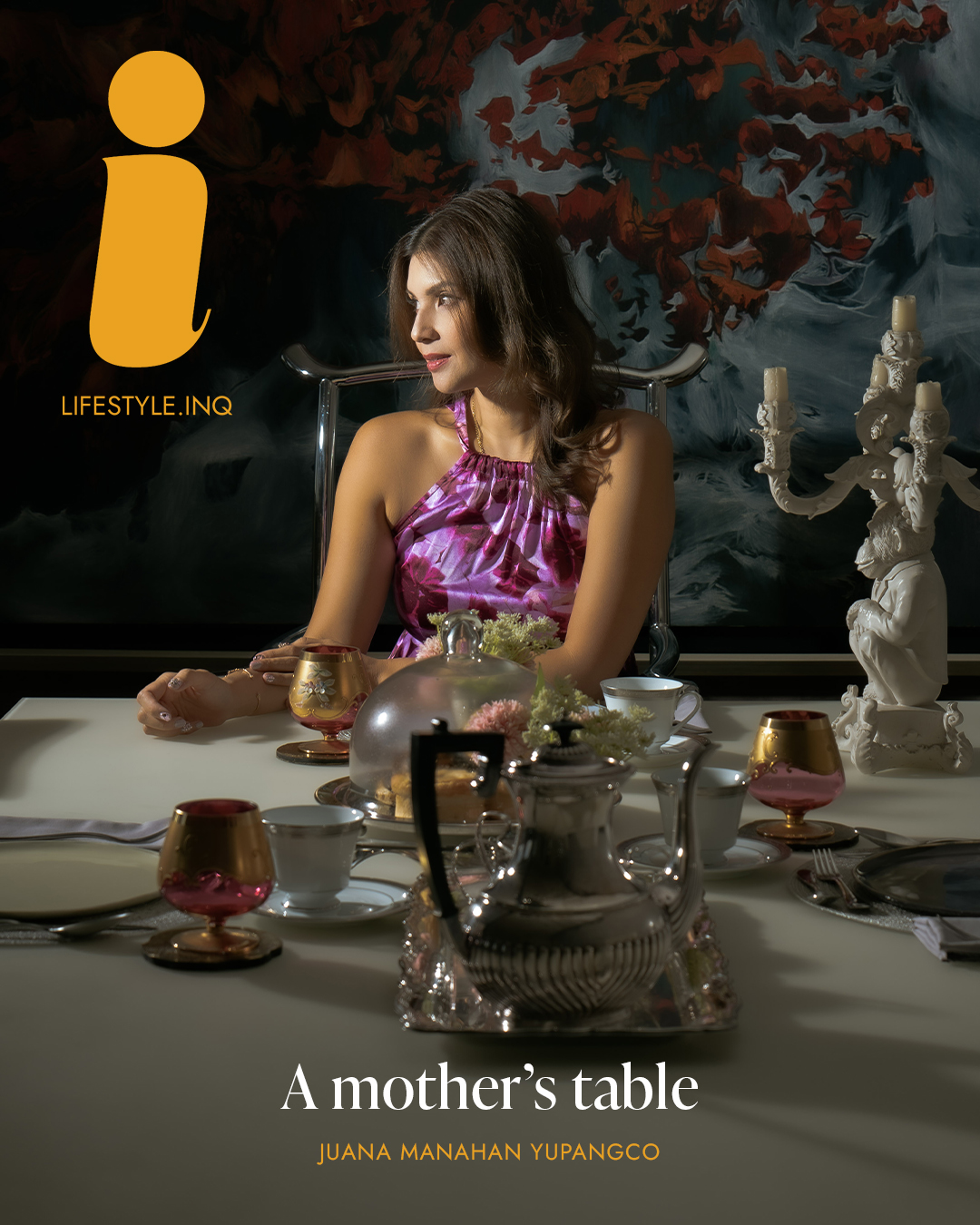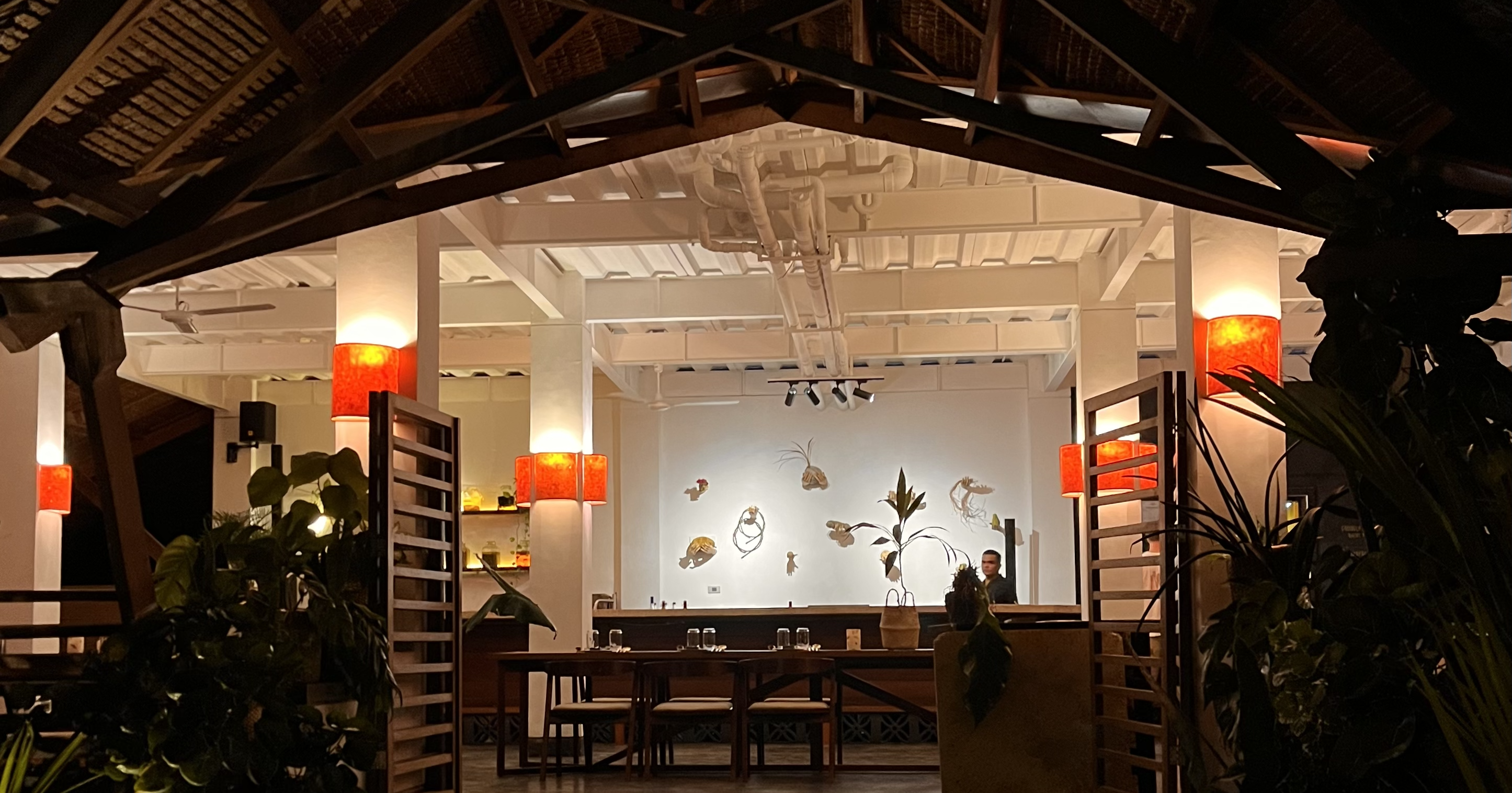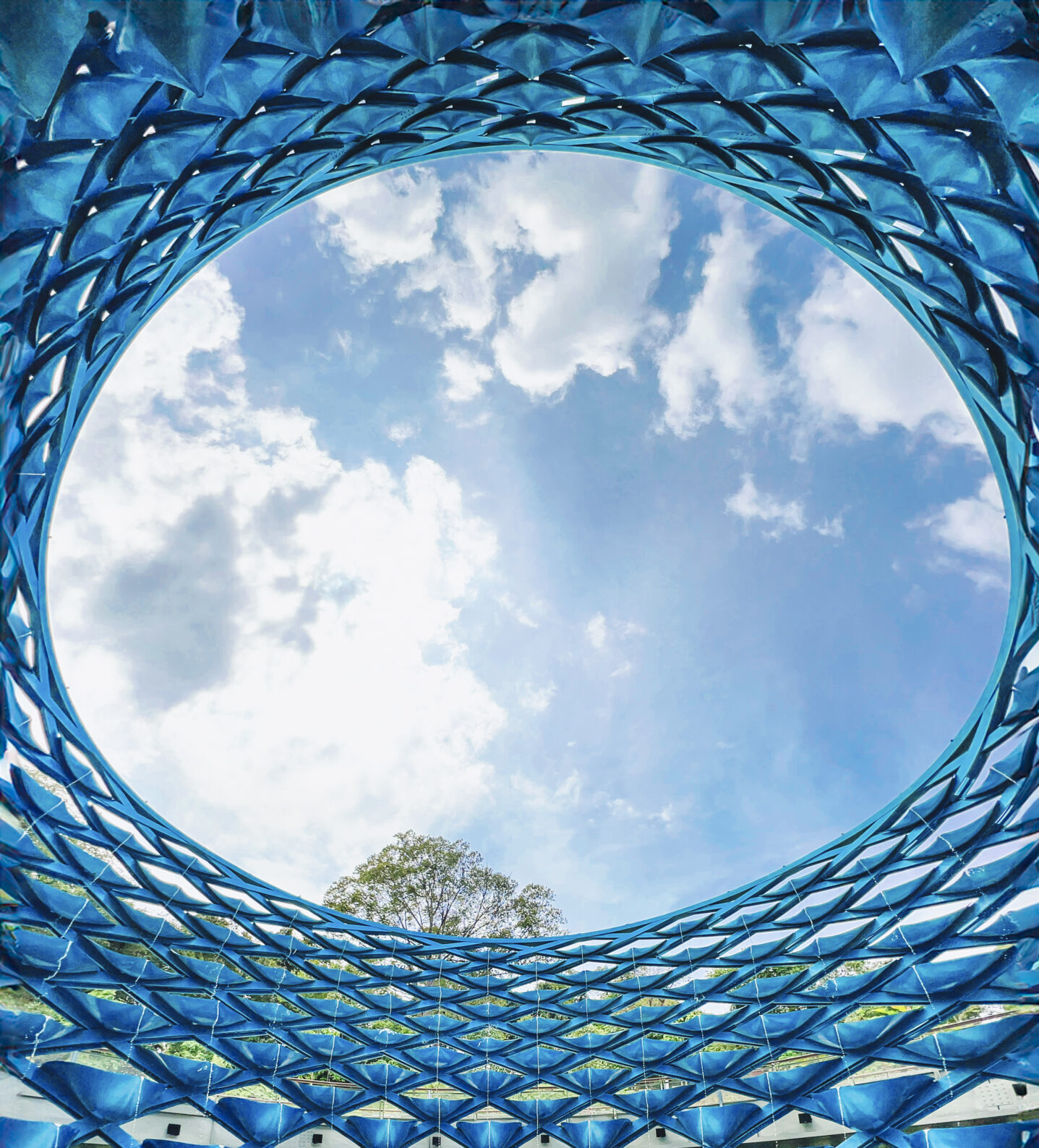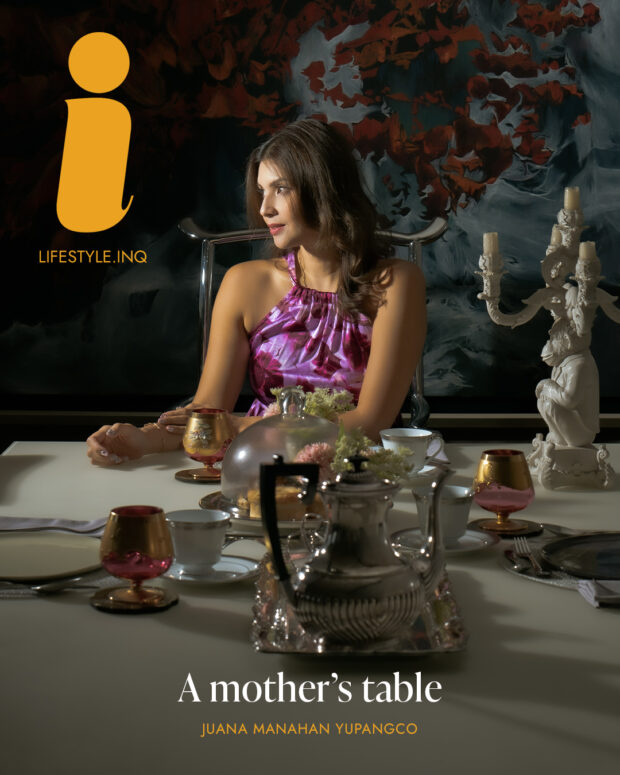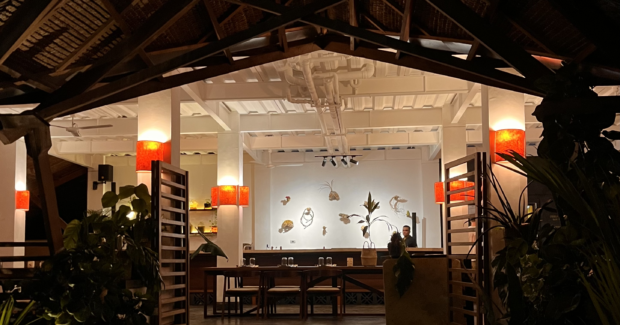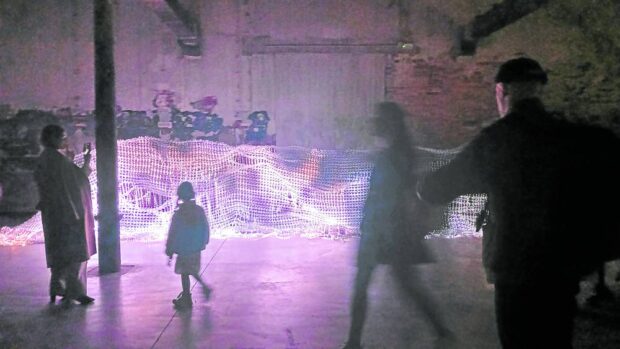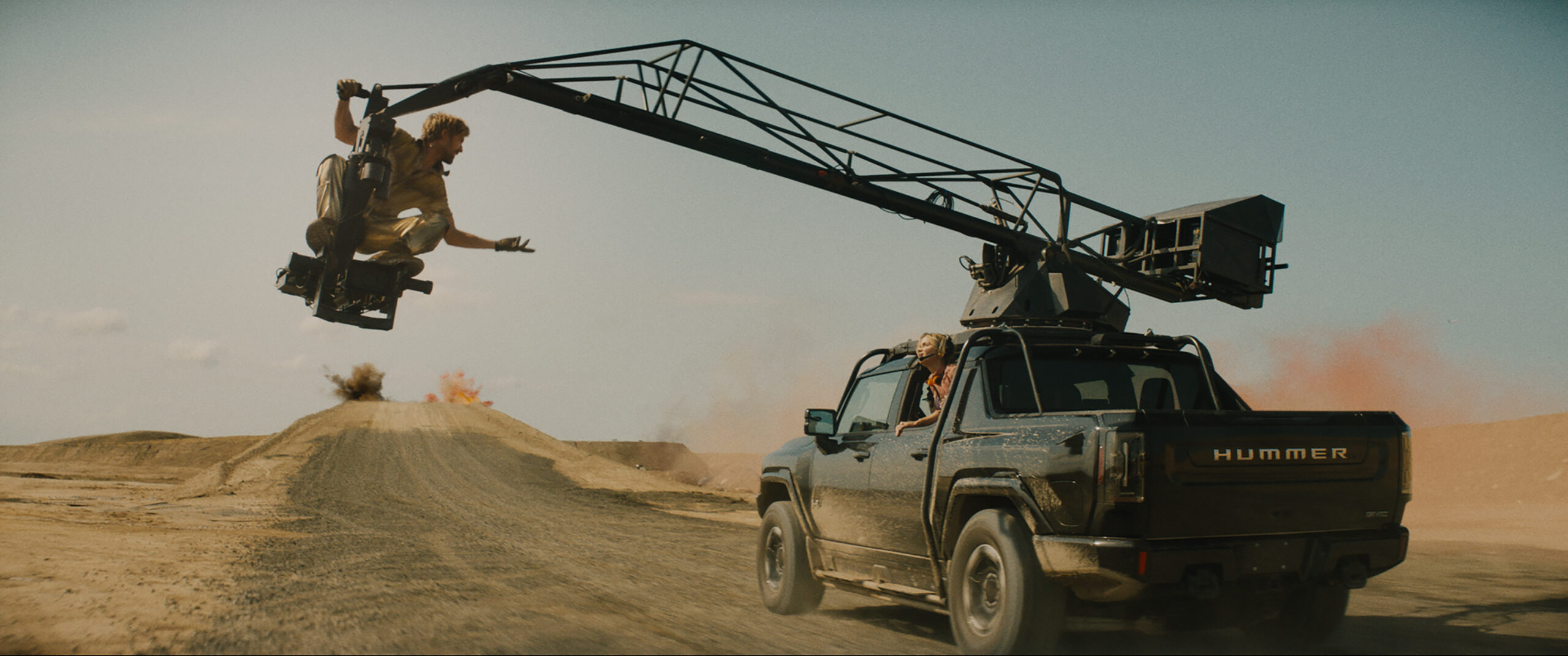Visual artist Miguel Lorenzo Uy sits down with artist and curator Patrick de Veyra to talk about liminality, (in)visibility, and uncertainty
Through his practice, Manila-based artist Miguel Lorenzo Uy views the world through the lens of “cosmicism,” an ideology that acknowledges the smallness of humanity in the vastness of the universe.
In his early practice, Uy explored the metaphor of light—how the experience of light in different contexts can create certain meanings, narratives, and beliefs. This eventually shifted and morphed into a more material and contemporary manifestation of light: the digital screen.
Since his first exhibit in 2016, Uy has been a full-time artist while also documenting exhibitions, making furniture, and fabricating technical components for the work of other artists on the side.
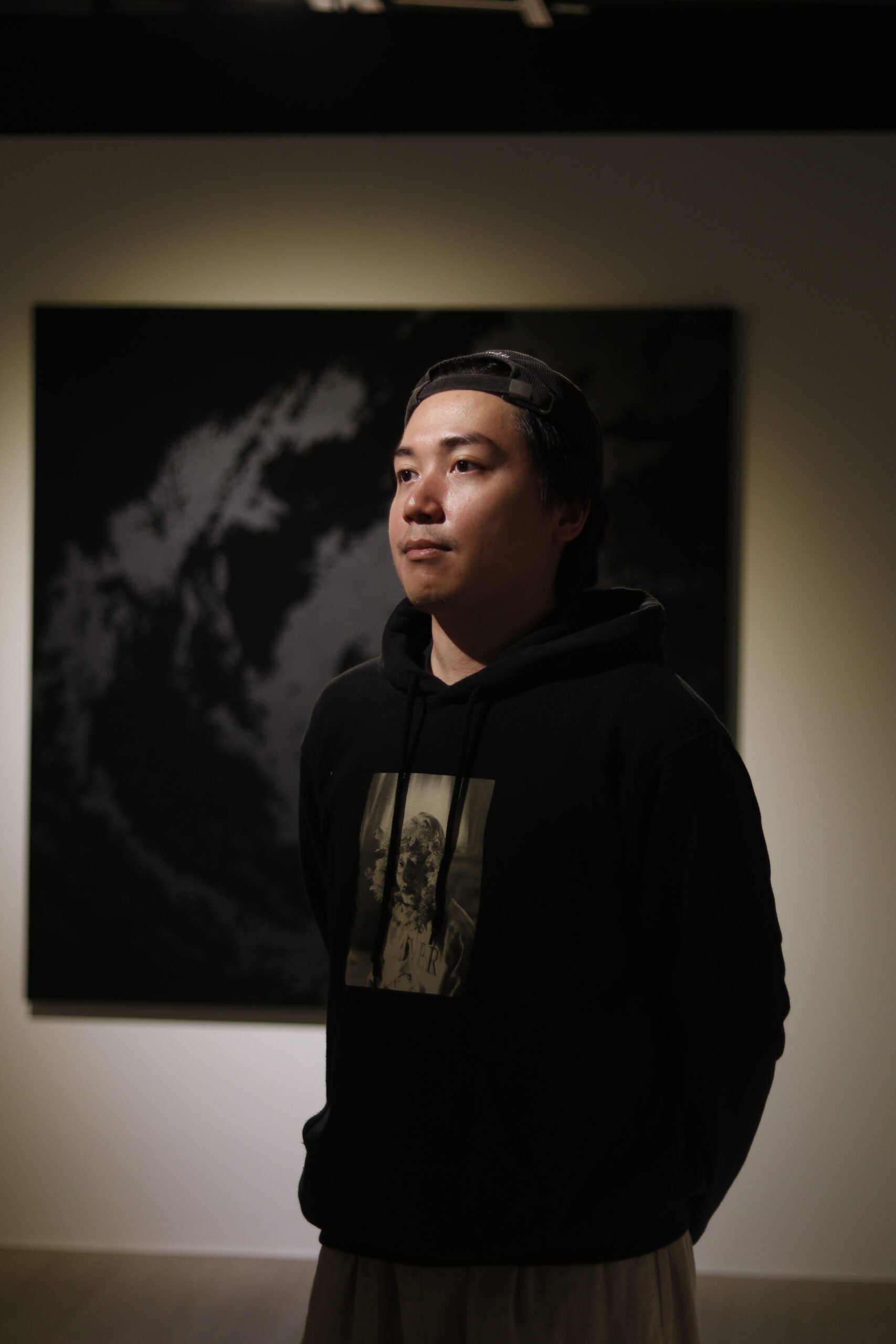
With the recent opening of his sold-out exhibition “Black Paintings” at Gravity Art Space, Uy presents work that uses the darkest of black pigments to reflect his practice.
READ MORE: How Gravity Art Space is breaking the gallery mold
“I created the first black painting last 2020 for an online show that was held on Instagram. During that time while everything outside was viewed through a screen and the overall mood of the moment seemed dark and miserable, I wanted to explore the idea of how we see and perceive black on the screen and black in reality, like how this faint wash of light is sensed in our eyes. I thought ‘Why not create a painting that uses the blackest black paint available?’
Using an acrylic paint that absorbs 99.4 percent of visible light, Uy sought to explore how black is perceived and experienced by the human eye. Combining this with a mix of normal black paint and micaceous iron oxide, Uy aimed to capture the essence of darkness in a tangible form.
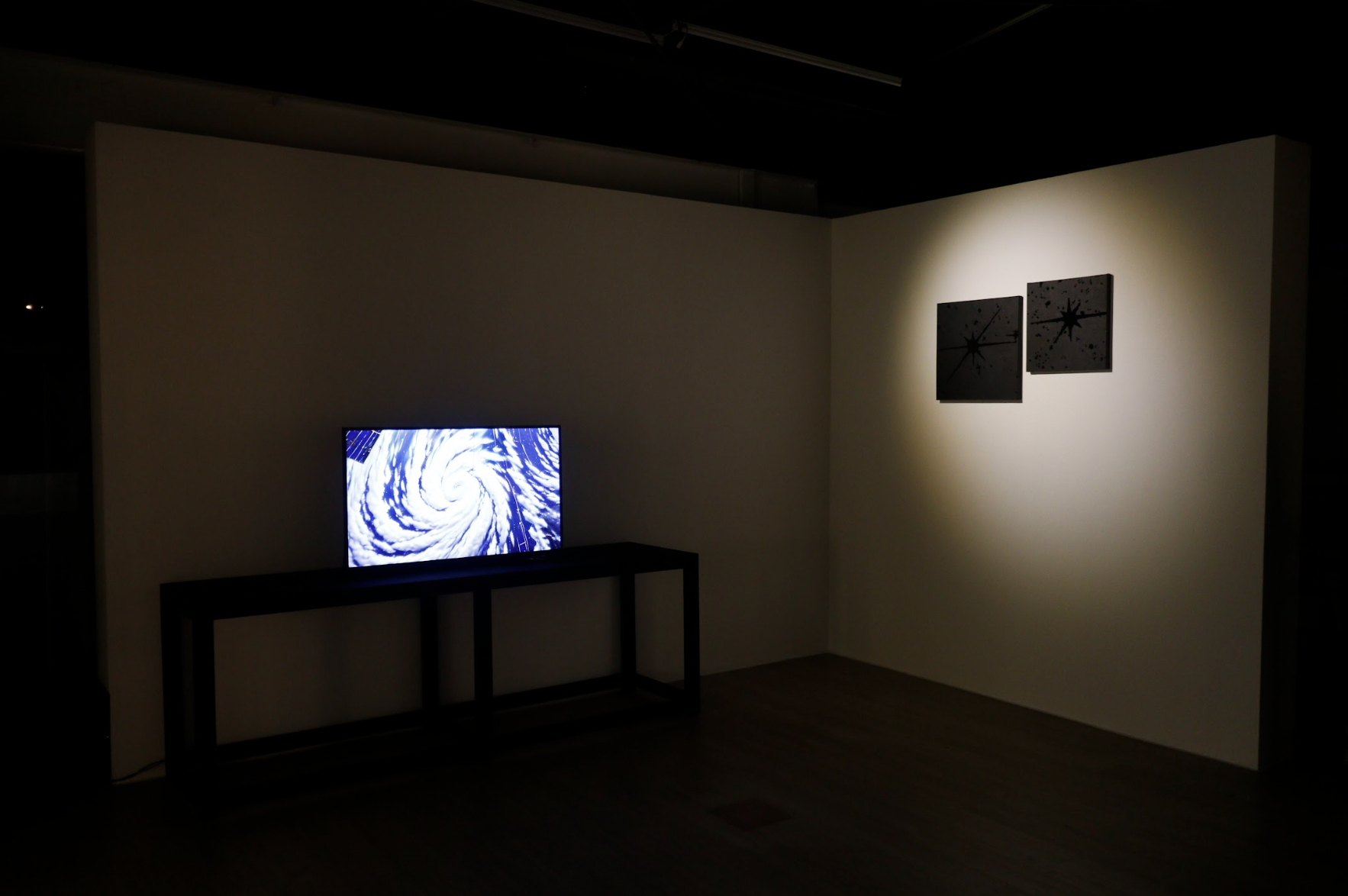
Transitioning from painting to film, Uy also created a one-minute film, with sounds oscillating between low hums and high frequencies, evoking a sense of unease, and even a tactile sense in the body. “Outside this boundary, a faint cosmos twinkles throughout the background of the shadows. The film of the dream loops endlessly,” says Uy.
Here, Uy sits down with artist and curator Patrick de Veyra to talk about liminality, (in)visibility, and uncertainty.
PDV: I feel that your body of work, which is heavily informed by your multidisciplinary practice and contemporary sensibility, possesses a quality of conceptual inquisitiveness. Where does this come from?
MLU: I never thought of myself nor my practice to be multidisciplinary. The works I create tackle different domains of production and consumption like fine art, electronic media, woodworking, etc. and I think the works are created out of necessity for me to experience the materiality and physicality of the medium/material itself, and at the same time, share it with people. I think it’s also a curiosity I have in deconstructing the mechanisms surrounding certain mediums/materials. So in short, it’s all trial and error and it’s always a learning experience for me when I create new work. I also think there’s always a philosophical aspect in every science and art of a material and medium and that is what compels me to explore and deep dive into different things that interest me.
PDV: In your ongoing exhibition titled ‘Black Paintings’ at Gravity Art Space, you have visually distilled your subjects into two shades of high darks/blacks. Can you walk us through the exhibition?
MLU: To give context to the recent black paintings, I made a previous work where I silk-screened a TV static pattern to a whole wall of a gallery. I liked the idea of the television’s output of different signals (audio and video) where a percentage of it is actually some sort of radiation coming all the way back from the Big Bang itself.
I consider the video piece in the show to be the central, primary piece. The paintings are simply physical manifestations of the scenes in the film. I intentionally wrote the statement in a way where reality, the dream, and the film seem to be intertwined. The audio used in the video piece is actually white noise that’s been digitally edited using filters (high-pass and low-pass and combinations of both) to isolate the frequencies in different timeframes/scenes.
“I also think there’s always a philosophical aspect in every science and art of a material and medium and that is what compels me to explore and deep dive into different things that interest me.”
PDV: Your first ‘black painting’ was produced during the pandemic. That blackness somehow captured the zeitgeist of the pandemic world. Would you say that blackness (and all its nuances) was your primary language, as you existed in a state of liminality? Can you paint us a picture of your life as an artist during the pandemic?
MLU: I realized that my works during the pandemic were very reactive, like a response to the moment. During that time, mis- and disinformation were very prevalent. The first black painting’s image is actually the first logo of Photoshop. I came across the idea of using the black paint that claims to absorb a certain percentage of visible light. It seemed fitting for the motif of the eye. Interestingly, the eye used in the painting is a logo for a computer program that has the capability to manipulate images.
READ MORE: These Filipino artists are exhibiting in Venice
PDV: One of the black acrylic pigments you used in your paintings absorbs about 99.4 percent of visible light. That is 0.565 percent away from the level of light absorption of Vantablack, the so-called “blackest black” pigment. Had Anish Kapoor not bought the exclusive rights to Vantablack, would you have used it for your ‘Black Paintings?’
MLU: The black paint I used is called “Musou Black” and it is readily available online. Vantablack on the other hand is not really paint per se but some sort of material that requires a special method of applying. The real cost of Vantablack has never been disclosed, but I read that you can request a 16 square centimeter sample from the manufacturer for £300. For the other (lighter) black, I thought of adding micaceous iron oxide to the other black as to somehow simulate either a constellation of stars or a faint TV static.
PDV: The use of two distinct kinds of black pigments provided a beautifully nuanced visual quality. It’s as if there is an attempt to straddle the liminal space between visibility and invisibility. Moving forward, how do you plan to further explore this nuanced relationship of black pigments in your black paintings?
MLU: It is difficult for me to pinpoint what’s to be done next (for the black paintings) as I would always have a tendency to bounce back and forth between different concerns, mediums, and materials. Sometimes I have to create a certain piece I have in mind in order to move forward or learn/discover something new. Sometimes newer materials and technologies emerge and some ideas tend to fade. In other instances, an event could render my present interest as irrelevant, and I must move on from it. Although, the idea could return within my radar and become important for me again in the future.
PDV: Anish Kapoor once said “A work will only have deep resonance if the kind of darkness I can generate is something that is resident in me already.” If you were to have a single sentence quote about your ‘Black Paintings’ exhibition, what would it be?
MLU: We are dust, but interestingly, every particle in our bodies came from stars.
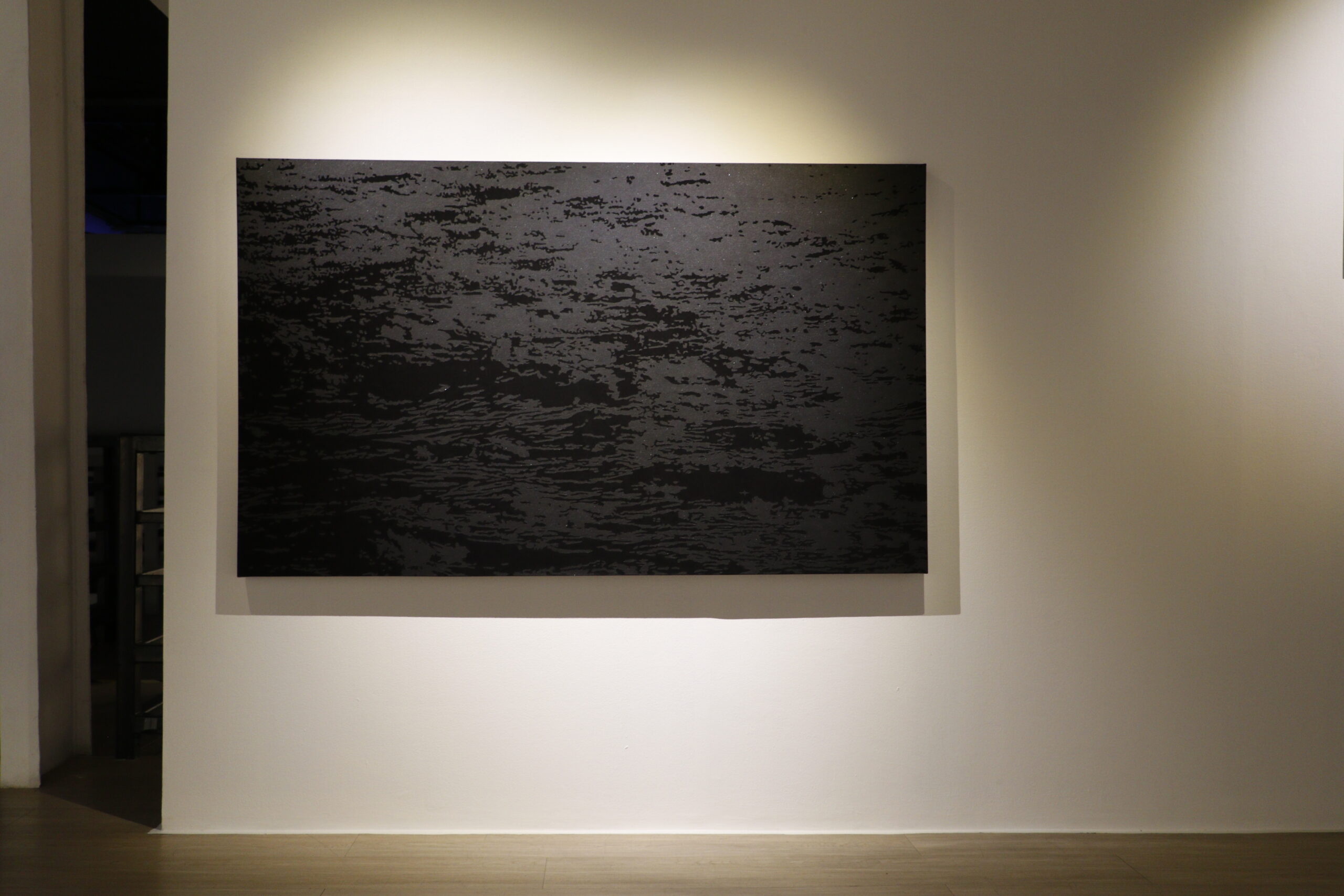
PDV: Based on your exhibition profile, you mentioned that the overarching theme of your body of work involves your relationship with the volatile world we live in and the uncertainty of the future. Can you share how this feeling has influenced not just your black paintings but also other projects/objects/images within your body of work?
MLU: I think my work and practice is unpredictable and uncertain (as how I would describe the futures I am currently exploring and speculating upon) as I see myself as someone who is always in a state of flux. I also have this love/hate relationship with my works, my practice, and the idea of art itself. To conclude, I think that the fast-evolving technologies, the information overload, and the lifestyle I am living and situated in influences the way I imagine different futures and at the same time see, experience, and share the present.
PDV: You have made a mark in the art scene as an experimental artist. What does the process of painting give you that your other processes (photography, digital projections, video installations, etc.) could not?
MLU: Honestly, I wouldn’t consider myself an experimental artist. Sometimes the medium dictates the process and/or the outcome and vice versa. Musou Black is basically acrylic paint. So I worked around the idea of the medium of paint and image-making. I thought of revisiting this series (which was created during the pandemic) as something as a marker signifying where I am situated in is going through another dark period (will it ever end?). On the other side of the world, a tech-assisted genocide is happening right in front of our face. The hypocrisy of the people in positions of power (political, cultural, financial) seems to be very clear and disturbing to me.
READ MORE: Cynthia Almario on finding balance in and out of her interior design practice
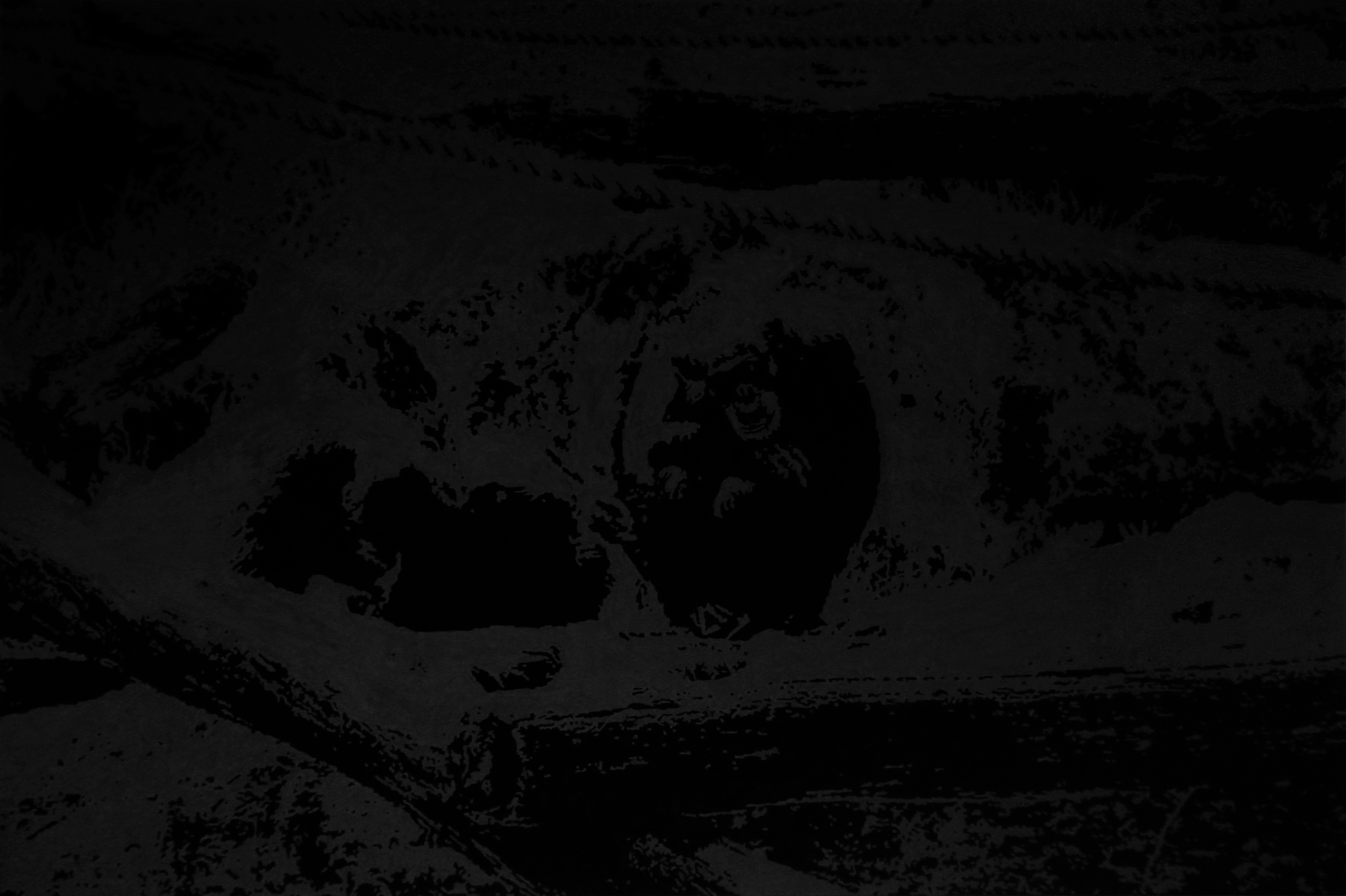
PDV: Can you name at least three artists in art history whose bodies of works you resonate with the most?
MLU: I cannot think of any artist that I resonate with in terms of the work I create. But recently I attended a lecture by Haegue Yang and I must say, her thought process and practice comforted me as a young artist who is still navigating through the structures of the art industry and the dynamics of the art scene.
PDV: Lastly, why did you choose to become an artist?
MLU: I chose to be an artist because there is no other way. I cannot stand to be sane in a corporate setting and I guess it’s my nature and personality to always make/create something using my hands. Being an artist (as a profession) is a privilege. The responsibility and ridiculousness that goes with it I think is the reason I like to consider myself as one.
“I chose to be an artist because there is no other way… Being an artist (as a profession) is a privilege. The responsibility and ridiculousness that goes with it I think is the reason I like to consider myself as one.”
Miguel Lorenzo Uy’s solo exhibition “Black Paintings” runs at Gravity Art Space from Apr. 2 to 27, 2024.
Artwork photos by Miguel Lorenzo Uy.


